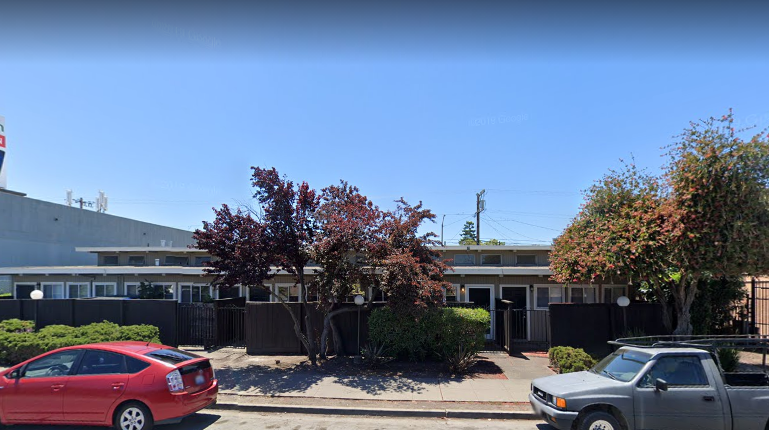This blog was published about the Bay’s Future Fund in partnership with LISC Bay Area. Find information about this development on the Bay’s Future Fund website.
By Andrew King, Senior Origination Loan Officer
Given the dual perks of beautiful, historic homes and close proximity to Silicon Valley, it’s not surprising that housing prices have risen quickly, and gentrification has raged through the port town of Redwood City over the past ten years. Though the census bureau estimates that at least 50 percent of the households in the southernmost end of the city earn an income of less than 60 percent of the Area Median Income (AMI), the median rent in Redwood City is now more than twice the national median.
Such rocketing rates make it impossible for low-to-middle-income workers to settle down in their own community, and spells near certain displacement for those already here. Fortunately there are efforts at play to protect affordable housing and stop displacement in Redwood City, and those proving most successful are coordinated efforts like the one that saved 3592 Rolison Road.

In the neighborhood with Facebook and other tech companies, this development preserves some of the diminishing affordable housing options in Redwood City.
In the neighborhood with Facebook and other tech companies, this development preserves some of the diminishing affordable housing options in Redwood City.
This 1960s, single-story, 10-unit building is home to 13 professionals. Each tenant has a studio apartment with a small outdoor patio and a parking spot, and the building is only a short walk to a great market, bakery, coffee house, and brewery.
In 2018, however, the homes of residents at 3592 Rolison Road were suddenly at risk. After years of living under an owner who only slightly increased their rent over time, the building was up for sale and likely to be purchased and turned into market rate housing. They were terrified.
“When things get sold around here, they are instantly torn down,” says Tom Hem, a digital pre-press technician at a local printing company, who has lived at 3592 Rolison for almost 12 years. “And, whenever they build something new, it’s high end. That’s what developers do. They don’t put in affordable housing, they put in stuff a choice few people can afford. Unless someone steps in to keep the property affordable.”
HIP Housing, a nonprofit affordable housing developer in the Bay Area, learned the building was being sold and stepped in to try and acquire it. Getting access to the funding needed, however, was going to take time, and time was not something that the red-hot San Mateo County housing market could accommodate.
That is when a second partner joined the effort to save this small, but crucial, building. The Sand Hill Foundation, a private foundation based in Palo Alto, offered to purchase and hold the building while HIP Housing built the financing needed to buy it themselves.
Sand Hill provided HIP with site control, but HIP, though grateful for the temporary reprieve, still had to find resources to purchase it outright, and quickly.
Redwood City has a program that balances housing stock by compelling market-rate developers to pay a fee to the city every time they develop a project. These fees are then redistributed to critical affordable housing projects. In an unusual move, Premia Capital, a local commercial real estate agency which admired HIP’s work, reached out to Redwood City to ask that their $2.49 million worth of fees go directly to any projects HIP was trying to fund. 3592 Rolison Road fit the bill.
“This was especially innovative,” says Kate Comfort, executive director of HIP Housing. “When it comes to protecting and preserving affordable housing, you have to act quickly. Redwood City’s great use of their Affordable Housing Ordinance and Impact Fee program and Premia’s proactive approach allowed us to get this funding when we actually needed it, and save this property. ”
With fees from Premia in hand, the project only needed a loan of $1 million to meet the rest of the purchase price. Comfort approached a local community development financial institution, Capital Impact Partners, to see if they could help. Among other sources of funding that Capital Impact distributes, they originate loans for the Bay’s Future Fund (BFF), one of the largest housing funds in the nation. As the investing arm of the Partnership for the Bay’s Future, BFF is focused entirely on preserving, protecting, and producing affordable housing in the Bay Area. Andrew King, senior loan officer at Capital Impact, knew 3592 Rolison Road was a perfect project for BFF.
“It was an exciting, worthwhile project that even had everyone’s attention at city hall, and we knew that, with the Bay’s Future Fund, we could get HIP the rates and loan terms they needed,” said King. “We were so impressed by the project that we added an additional $100,000 to the loan– for a total $1.3 million– so HIP could also do some repairs.”
In the end, between the amount Redwood City put towards the purchase price and the Bay’s Future Fund’s long-term, low-interest loan, HIP’s mortgage payments on the property would be low enough to guarantee that rent for existing tenants will not change; and rent will be restricted to occupancy by people earning 60% of the Area Media Income (AMI) or below for the next 55 years.
Comfort is most impressed by the way it all came together. “To have private, public, and nonprofit partners all working together is exciting. We even got a local property management company to pitch in and help with some necessary, immediate renovations pro bono. This is atypical in the development world and just goes to show that, when various sectors are working together, you can get so much more done. It’s a thrilling feeling.”
Cindy Wu, Executive Director of Bay Area LISC, who manages the Bay’s Future Fund, agrees, “This is the story of partnership—of a group of diverse organizations coming together to make sure we don’t lose existing affordable housing— to maintain the livability of a piece of a neighborhood for the families that live there.”







